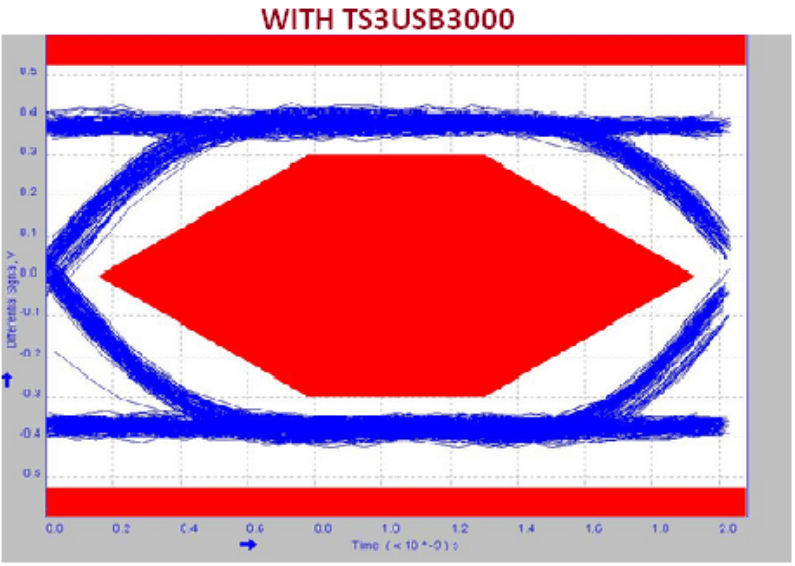SCDS337F December 2012 – June 2019 TS3USB3000
PRODUCTION DATA.
- 1 Features
- 2 Applications
- 3 Description
- 4 Revision History
- 5 Pin Configuration and Functions
- 6 Specifications
- 7 Parameter Measurement Information
- 8 Detailed Description
- 9 Application and Implementation
- 10Power Supply Recommendations
- 11Layout
- 12Device and Documentation Support
- 13Mechanical, Packaging, and Orderable Information
Package Options
Mechanical Data (Package|Pins)
- RSE|10
Thermal pad, mechanical data (Package|Pins)
Orderable Information
9.2.3 Application Curves
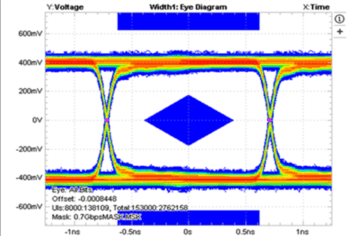

| The TS3USB3000 contributes only 8.4 ps of peak-to-peak jitter for 0.7-Gbps data rate | ||
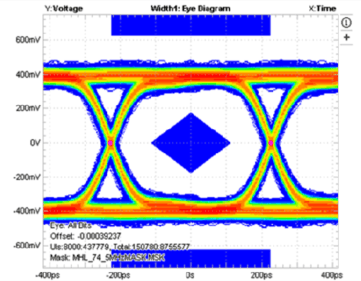
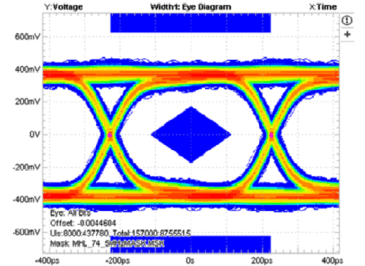
| The TS3USB3000 contributes only 3.8 ps of peak-to-peak jitter for 2.2-Gbps data rate |


| The TS3USB3000 contributes only 5.8 ps of peak-to-peak jitter for 3-Gbps data rate | ||


| The TS3USB3000 contributes only 7.6 ps of peak-to-peak jitter for 4.5-Gbps data rate | ||
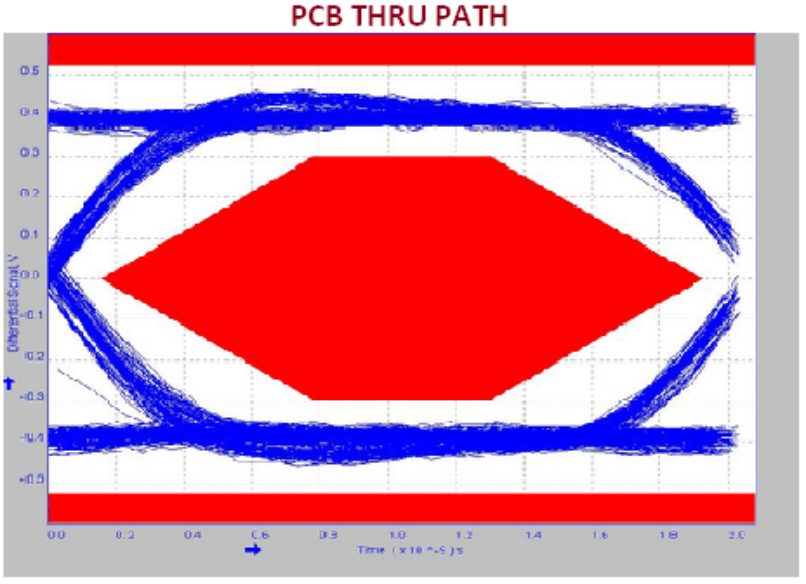
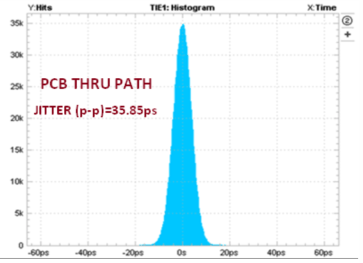 Figure 17. Time Interval Error Histogram: 0.7 Gbps With No Device
Figure 17. Time Interval Error Histogram: 0.7 Gbps With No Device 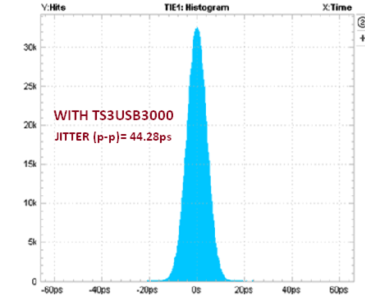
| The TS3USB3000 contributes only 8.4 ps of peak-to-peak jitter for 0.7-Gbps data rate |
 Figure 21. Time Interval Error Histogram: 2.2 Gbps With No Device
Figure 21. Time Interval Error Histogram: 2.2 Gbps With No Device 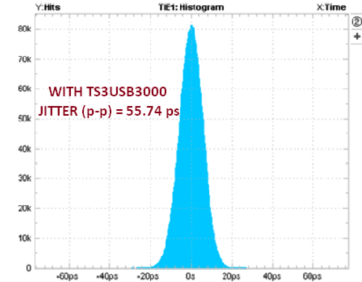
| The TS3USB3000 contributes only 3.8 ps of peak-to-peak jitter for 2.2-Gbps data rate |
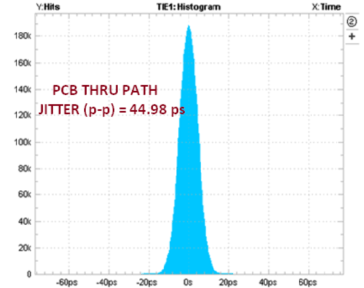 Figure 25. Time Interval Error Histogram: 3 Gbps With No Device
Figure 25. Time Interval Error Histogram: 3 Gbps With No Device 
| The TS3USB3000 contributes only 5.8 ps of peak-to-peak jitter for 3-Gbps data rate |

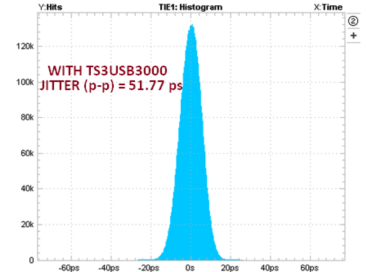
| The TS3USB3000 contributes only 7.6 ps of peak-to-peak jitter for 4.5-Gbps data rate |
